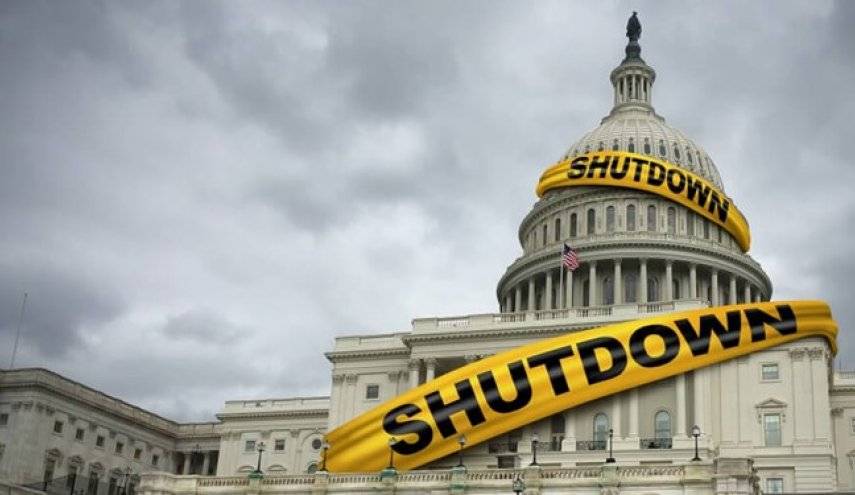728 Views
Trump's "Unprecedented Opportunity": How a U.S. Shutdown Became a Weapon against the State Itself
The U.S. federal government has been shut down since October 1, 2025, due to a failure to agree on a budget. This event occurs when the U.S. Congress and the President fail to pass and enact a budget bill or a temporary funding bill [known as a "continuing resolution"] for government departments and agencies before the end of the fiscal year [October 1st]. In the absence of funding legislation, the government is legally prohibited from spending money on many activities, leading to a shutdown. The persistence of this situation has damaged the U.S. economy by billions of dollars and destabilized financial markets.
During a government shutdown, federal employees who remain at their posts often continue working without pay until Congress acts to fund the government. Others are furloughed, meaning they are not expected to work. After lawmakers reach an agreement on funding, pass the bill, and the shutdown ends, federal employees receive their back pay. However, the truth is that federal employees, with an average salary of $97,000 (often less), live at the base of the middle class, and this unpaid shutdown in a market saturated with unemployed federal workers leads to a market crash, disrupts government services, and harms all Americans.
But in response to criticisms of this issue, Trump has called the shutdown an "unprecedented opportunity" and threatened to permanently fire hundreds of thousands of federal employees. He stated that this would be a permanent dismissal, unlike the 2019 shutdown.
Furthermore, while this crisis is ongoing, Trump and Defense Secretary Pete Hagert held an unprecedented meeting with hundreds of generals and admirals at Quantico. This meeting cost millions of dollars. During this meeting, Trump referred to his opponents as "foreign enemies" and threatened to fire them. He even made jokes involving old warships and the N-word (nuclear and racist).
The primary reason for this shutdown, presented in American media, is the disagreement between Democrats and Republicans over budgetary issues, particularly regarding health insurance. Democrats want to extend health insurance subsidies, while Republicans prefer these issues to be resolved outside the budget framework. However, government shutdowns in the U.S. have precedents; this is the fifteenth shutdown since 1980 and the fourth under President Donald Trump. Therefore, the main cause of U.S. government shutdowns must be attributed to the country's political system and laws. One of the primary reasons for this situation is the system of separation of powers and the institutional design of Congress. Congress has complete authority over the budget and taxes, and passing budget laws requires support from both chambers and an absolute majority in the Senate.
Under conditions of intense political polarization, achieving this majority becomes extremely difficult. Even when one party controls both chambers, as is currently the case with Republicans holding the majority in Congress, there is still no guarantee of quickly passing a budget; because senators from the majority party need support from opposing senators to pass laws.
The consequences of this shutdown can be divided into two categories:
1. Economic Consequences: A government shutdown reduces economic activity, delays government projects, and causes volatility in financial markets. Essentially, instability in budget approval leads to decreased investor confidence and stock market fluctuations.
2. Social and Political Consequences: Public trust in the government decreases, and people become dissatisfied. 68% of Americans believe the threat of a government shutdown reduces their trust in the government. Furthermore, whichever party is responsible for the shutdown will suffer losses in the next election. Disputes between Congress and the White House will also intensify.
Some moderate Republicans are also concerned about Trump's party strategies following this event. They believe these approaches could undermine bipartisan efforts to solve this American crisis. Additionally, two plans to resolve the shutdown crisis have been proposed in the Senate, but American media report that the U.S. Senate has failed to pass these two plans from Republicans and Democrats to end the U.S. government shutdown, meaning the shutdown will continue.
Finally, the important point in this shutdown is its timing and the repetition of this event across different U.S. administrations, especially under Trump. This has happened four times during Trump's administration, and he also holds the record for the longest shutdown in 2018, which lasted 35 days. Such shutdowns not only call the credibility of the Trump administration into question but also weaken America's international credibility and will negatively impact U.S. economic policies on the international stage.
Translated by Ashraf Hemmati from the original Persian article written by Hakimeh Zaim Bashi
https://www.thenation.com/article/politics/trump-shutdown-hegseth-moral-rot/
https://www.theatlantic.com/politics/archive/2025/10/government-shutdown-weaponized/684441/
https://www.thenation.com/article/politics/trump-shutdown-hegseth-moral-rot/
https://www.cbsnews.com/news/government-shutdown-2025-funding-congress/?utm_source=chatgpt.com
https://farsnews.ir/E_Moein/1759570158953742935
https://www.brookings.edu/articles/what-is-a-government-shutdown-and-why-are-we-likely-to-have-another-one/?utm_source=chatgpt.com
https://www.brookings.edu/articles/what-is-a-government-shutdown-and-why-are-we-likely-to-have-another-one/?utm_source=chatgpt.com
https://www.reuters.com/business/finance/centrist-republicans-warn-against-trumps-partisan-shutdown-strategy-2025-10-04/?utm_source=chatgpt.com

Comment
Post a comment for this article